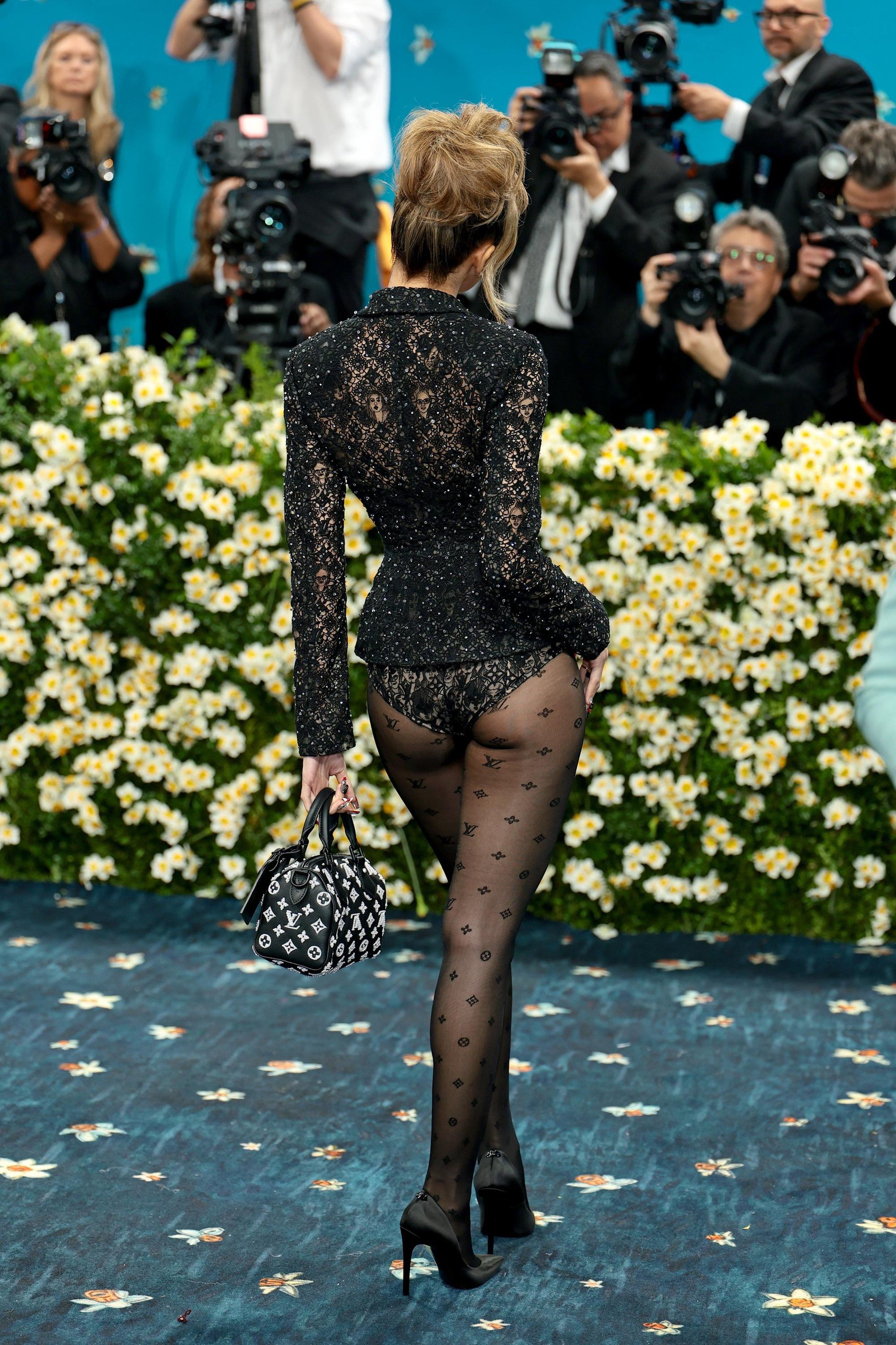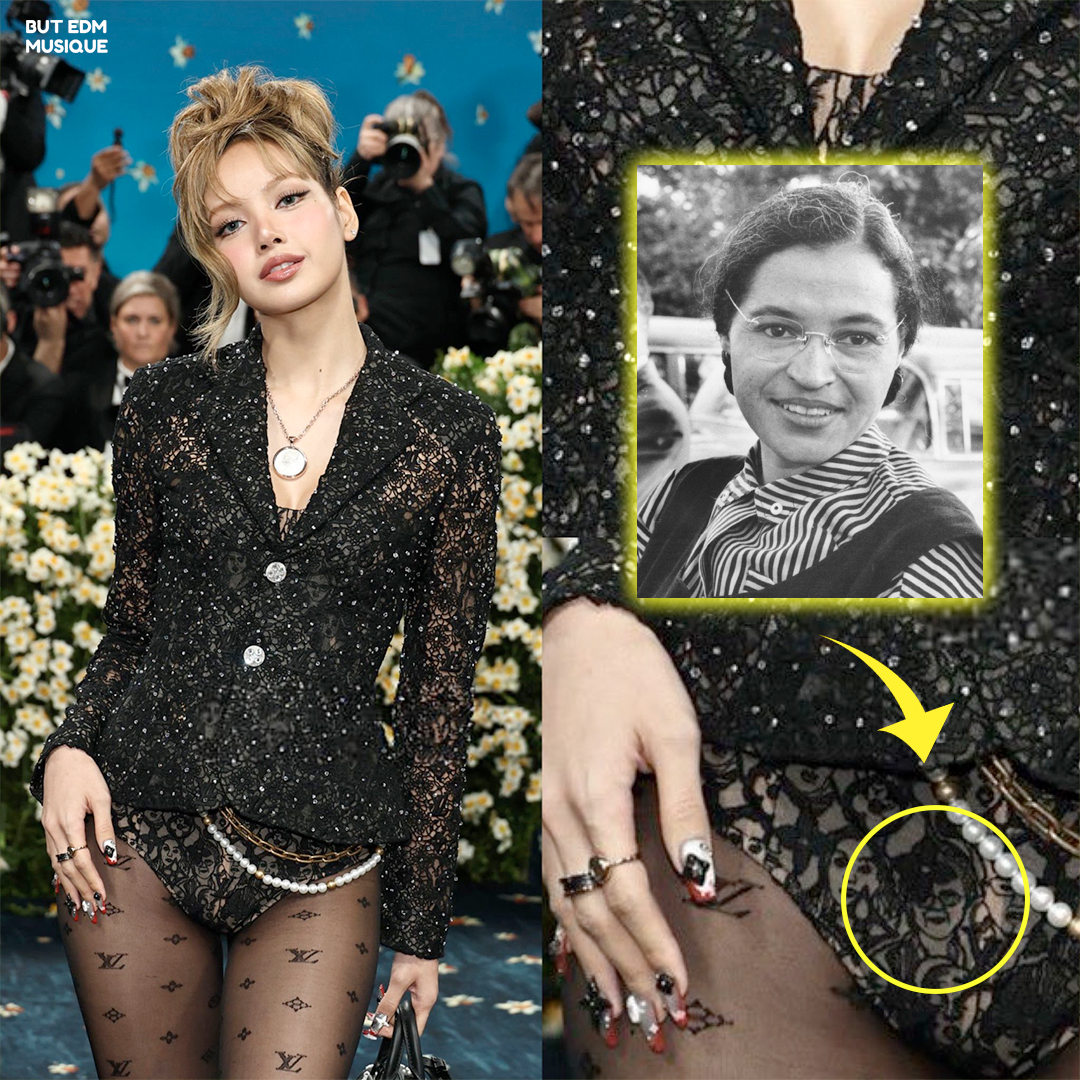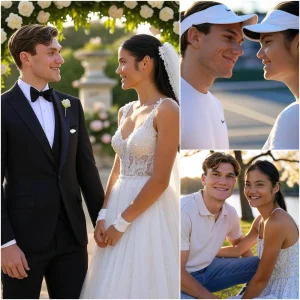Lisa BLACKPINK Sparks Social Media Firestorm: Did She Unknowingly “Step Over” Rosa Parks’ Image?

Met Gala 2025 has once again delivered spectacle, glamour, and controversy—but few could have predicted the online firestorm ignited by K-pop superstar Lisa of BLACKPINK. What began as a bold fashion statement has rapidly spiraled into accusations of cultural insensitivity and historical disrespect, after eagle-eyed viewers spotted what appeared to be the image of Rosa Parks embedded in a questionable location on Lisa’s custom outfit.
Lisa, globally recognized for her fashion-forward sensibilities and trailblazing presence in both the music and luxury worlds, arrived at the prestigious event in a striking black lace ensemble. The outfit, styled with sheer embellished fabric, ornate accessories, and her signature elegance, initially drew praise from fashion commentators. However, attention quickly turned to a detail many viewers found deeply unsettling.
Zoomed-in photos circulating on social media revealed that the lace fabric on the lower half of Lisa’s outfit appeared to contain the face of civil rights icon Rosa Parks. Positioned near the pelvic area, the image—whether intentionally designed or coincidental in resemblance—sparked immediate outrage.
Critics took to Twitter, Instagram, and TikTok to express their frustration. “This is beyond tone-deaf. You do not put the face of a civil rights hero in that position on a garment,” one user tweeted, gaining over 100,000 likes. The hashtag #RespectRosaParks trended globally within hours, accompanied by thousands of posts demanding accountability from Lisa and her styling team.
“This isn’t high fashion—it’s historical erasure disguised as design,” commented one Instagram user. Others called the incident “disgraceful,” urging the Met Gala organizers and Lisa’s agency to respond.
To date, neither Lisa nor her representatives have issued an official statement addressing the controversy. Sources close to the artist suggest that the design may not have been intended to depict Parks specifically, and that the resemblance may be coincidental. Nonetheless, that explanation has done little to satisfy critics, many of whom argue that public figures—especially those with massive influence—bear responsibility for the imagery they showcase.
Fashion industry insiders have also weighed in. Some see this as yet another case of fashion’s blind spot when it comes to cultural sensitivity. “There is a long history of the industry borrowing from powerful symbols without context,” said one fashion historian. “But placing a face—any face associated with such a significant moment in civil rights history—on an intimate part of a garment crosses a clear line.”
Styling experts have echoed this sentiment. “It’s shocking that such a detail passed through so many hands—from designer to stylist to artist—without someone recognizing the potential issue,” said one celebrity stylist, speaking anonymously. “That’s a failure at multiple levels.”
The controversy has also opened up a broader conversation around the responsibility of celebrities in the global spotlight. While some fans have come to Lisa’s defense, arguing that she likely had little control over the intricate details of the design, others have countered that her status as a fashion icon demands greater awareness.
“She’s not just a performer—she’s a brand, a role model, and a representative of modern culture,” wrote one fashion blogger. “When you step onto the Met Gala carpet, you’re not just wearing a dress. You’re making a statement.”
The backlash has placed Lisa’s otherwise pristine public image under scrutiny. Though still widely admired for her talent and charisma, this incident threatens to impact her standing in Western markets, where awareness of racial justice and historical context carries significant weight in public discourse.
Several civil rights organizations have also weighed in, calling for a public apology and greater accountability within the fashion industry. Some have suggested this incident should serve as a wake-up call for both celebrities and designers to implement more rigorous cultural review processes before releasing pieces to the public.
Meanwhile, fans await Lisa’s response. Some believe that a sincere statement, acknowledging the issue and promising to do better, could help repair the situation. Others warn that continued silence may only fuel the outrage further.

As the dust settles, one thing remains clear: in an age where images travel faster than explanations, the margin for error is razor-thin. Lisa’s Met Gala look, intended as a celebration of art and fashion, has instead become a lightning rod for a cultural debate that extends far beyond a red carpet.
Whether this moment becomes a footnote or a turning point in Lisa’s career will depend on how she and her team choose to respond. But for now, the world watches—and remembers that in fashion, as in history, every detail matters.






